How to clean a non-stick pan, so you can host weekend brunches without the stress
No, I don't want no scrubs

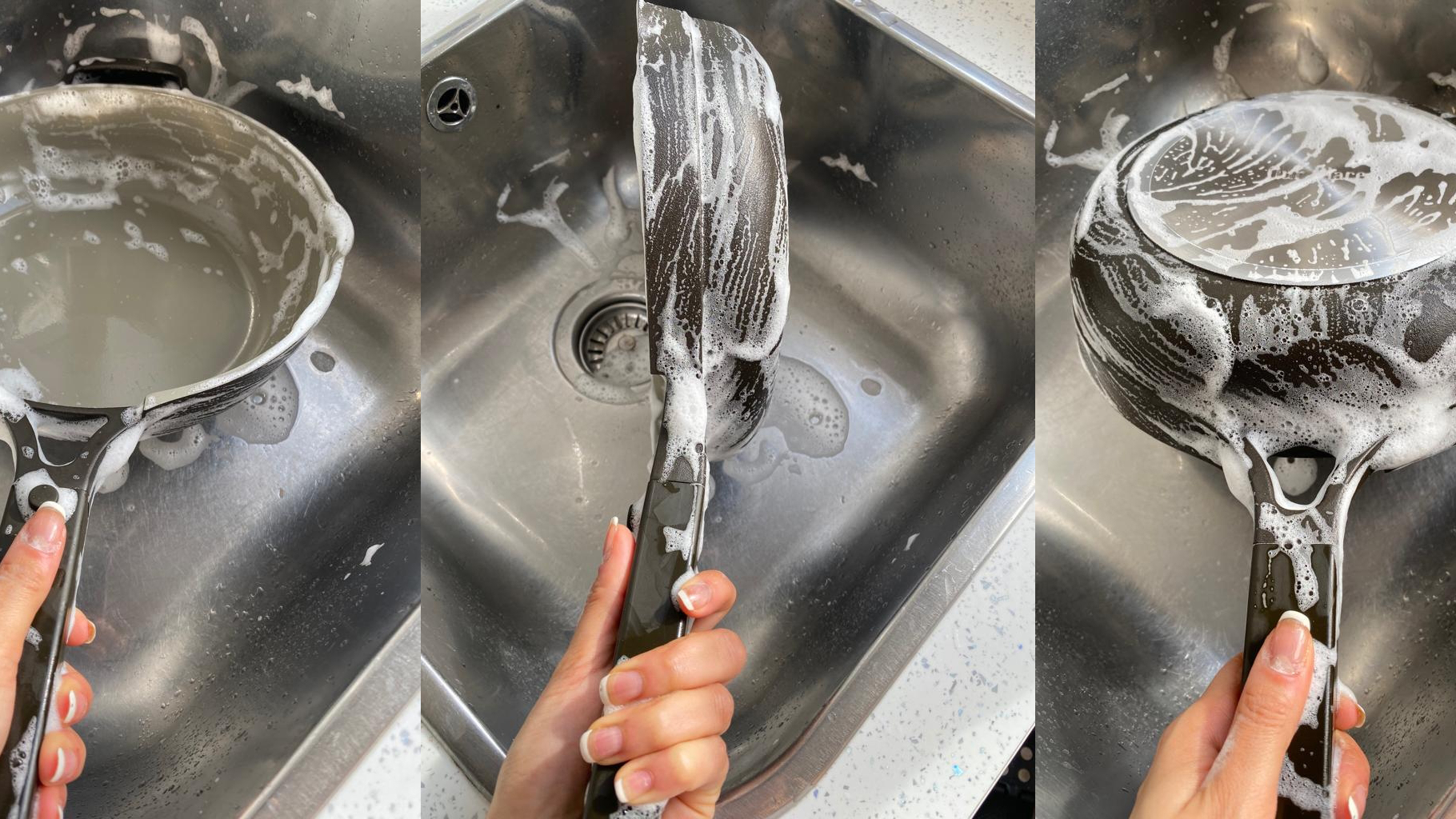
I'm not a big TV dinner fan, so knowing how to clean a non-stick pan was one of the first things I learned how to do growing up. That, and household chores were a quick way to earn a dollar or two from my parents.
But, way back when I was a tween, I remember ruining one of mom's super spendy non-stick frying pans with a wire scourer (yes, I know now). Years down the line, I think she's only *just* forgiven me, but I'll let you know if her resentment conveniently comes up in my dad's father-of-the-bride wedding speech this year.
Now that I'm older (and a bit more informed), I'll show you how to get your sauteeing staple free from food particles, all while protecting the coating that stops everything from sticking to the base of your flat-bottomed pan. The good news is that this can be achieved with just two cleaning supplies that you're guaranteed to have lying around.
How to clean a non-stick pan
Good to know
Time: 5 minutes
Difficulty: Easy
Helpful hints: I used the Our Place Always Pan to show you how to go about cleaning a non-stick pan. The brand advises that the pan should be washed by hand only, but dishwasher-safe frying pans do exist.
WARNING: Whatever you do, don't be tempted to use any abrasive cleaning products or metal accessories (ie: a wire scourer or brush) to clean your non-toxic cookware. It's not necessary, and by doing this, you will damage your appliance and invalidate any warranty/guarantee.
Get small space home decor ideas, celeb inspiration, DIY tips and more, straight to your inbox!
Here's what you'll need
- Access to a sink with a faucet
- Your favorite dish soap — for me it's Ecover (which you can buy from Amazon) or another eco-friendly dish liquid.
- A small soft sponge or washing-up brush — I like this Scotch-Brite non-scratch dish wand from Amazon
- A dish towel or microfiber cleaning cloths for drying (optional)
- Your trash can
How to clean a non-stick frying pan
Step 1: Let your frying pan cool down

An Our Place Always Pan in sink with MOAM organic washing-up liquid dish soap and sponge
Once you've finished cooking in your non-stick pan on your stovetop, reap the rewards of your hard work and allow the pan to come to a comfortable temperature so you don't scald yourself when cleaning it. The Always Pan isn't ovenproof, but others are. In this case, the handle may be *very* hot, so it might be a good idea to use an oven glove to retrieve it.
WARNING: Don't be tempted to submerge it in cold water right after using it, as extreme temperature changes could damage the non-stick coating and you could burn yourself in the process.
Step 2: Remove any food debris and dispose of safely
If you've got any leftover sauce or food scraps — pop them in the trash or your food waste bin.
WARNING: It's tempting, but avoid pouring oil, grease, or large pieces of food debris down the kitchen sink/drain as you could create a blockage or issues with your sewage system.
Step 3: Rinse the pan, lid, and spoon with warm water
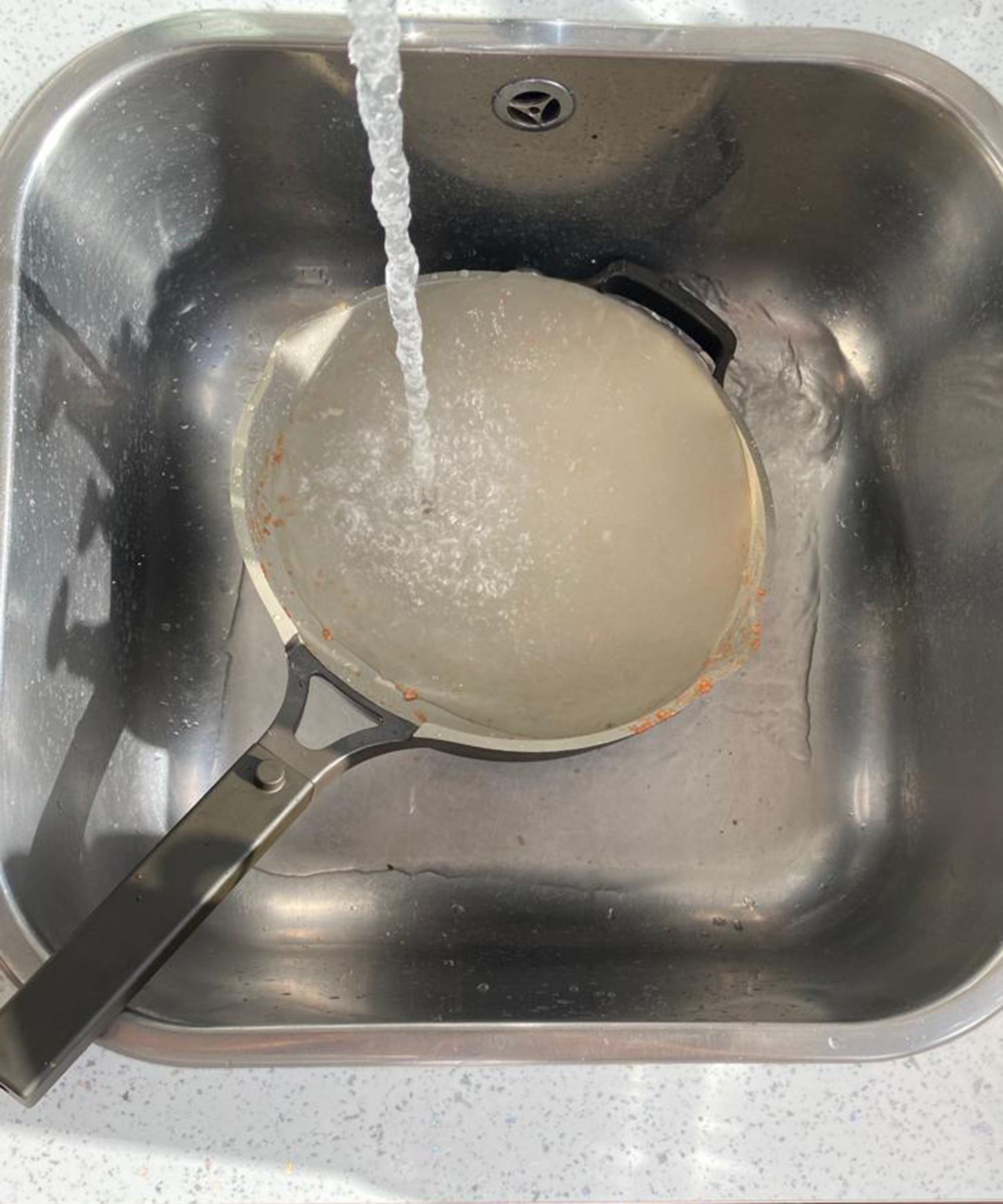
Rinsing an Our Place Always pan with running water from kitchen faucet
If your non-stick frying pan comes with a lid, give this a once-over with running water from your faucet. You'll also want to give your spoon a little water bath, too.
Spoon? What spoon? Don't panic! The Our Place Always Pan comes with a wooden nesting utensil, which should only be hand washed.
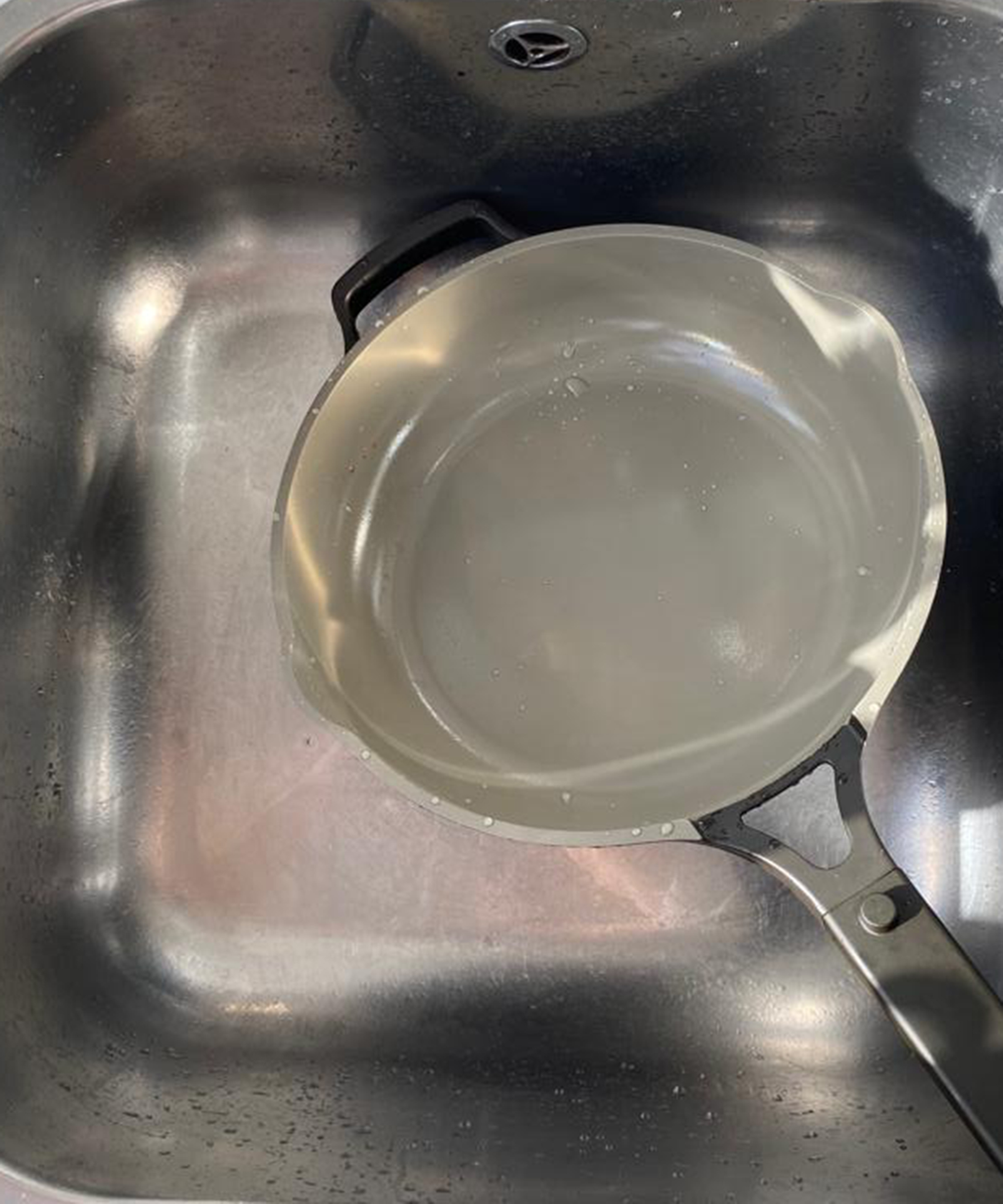
An Our Place Always pan rinsed clean with water in kitchen sink
I find this pre-rinse gets rid of 99% of the food debris, which means you'll use less dish soap and you're less likely to stain your sponge.
Step 4: Apply dish soap to your sponge and gently scrub
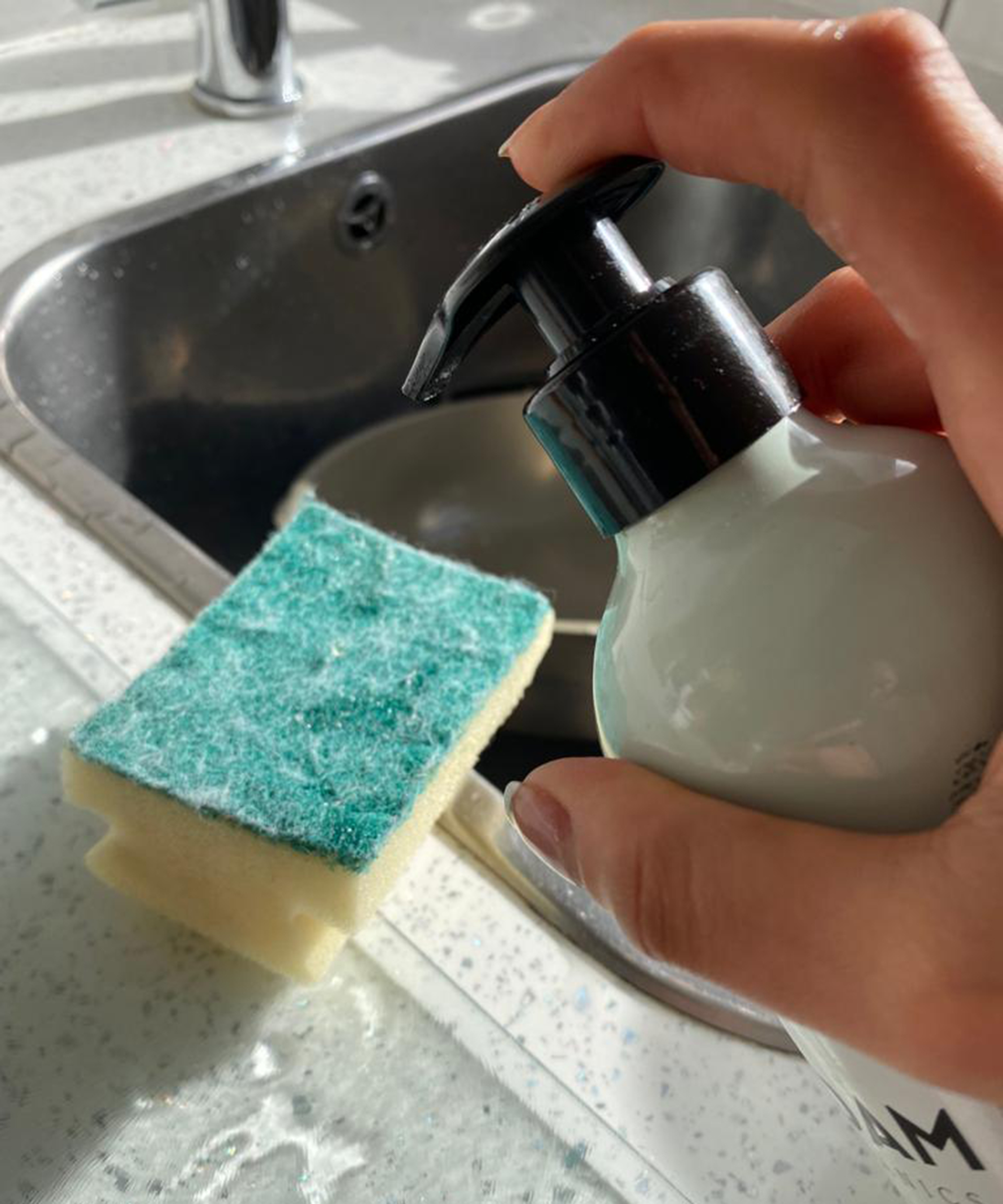
Christina Chrysostomou applying Moam Organic dish soap to green and yellow dish washing sponge
Add a drop of dish soap to your sponge or washing-up brush, and run it under water to create a lather.

Apply light pressure in circular motions to lift any stubborn food debris off of your pan, lid, and spoon. Don't forget to get into all the nooks and crannies of your skillet, making sure to clean the base as well as the side, handle, and bottom.
Expert tip: "Once the pan is clean, I always take a Q-tip to clean around the little knobs inside where the handle connects to the pan!" says content creator and TikTok cleaning influencer, Melissa Metrano.

Christina Chrysostomou demonstrating how to clean a non-stick frying pan lid
Step 5: Pour out your suds and rinse
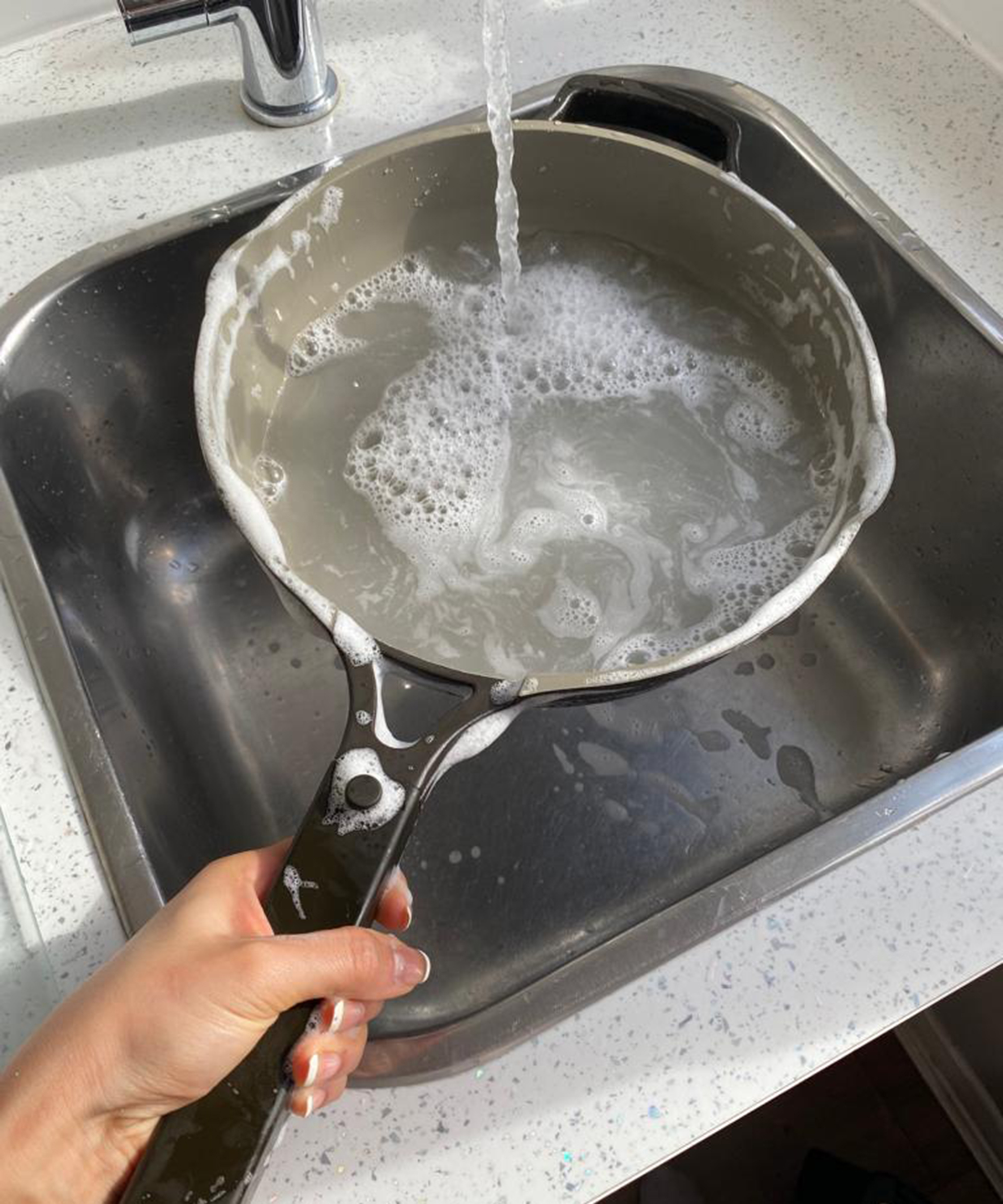
Christina Chrysostomou rinsing the base of the Our Place Always Pan in the kitchen sink
Pour the dirty water into the sink and rinse until the water runs clear.
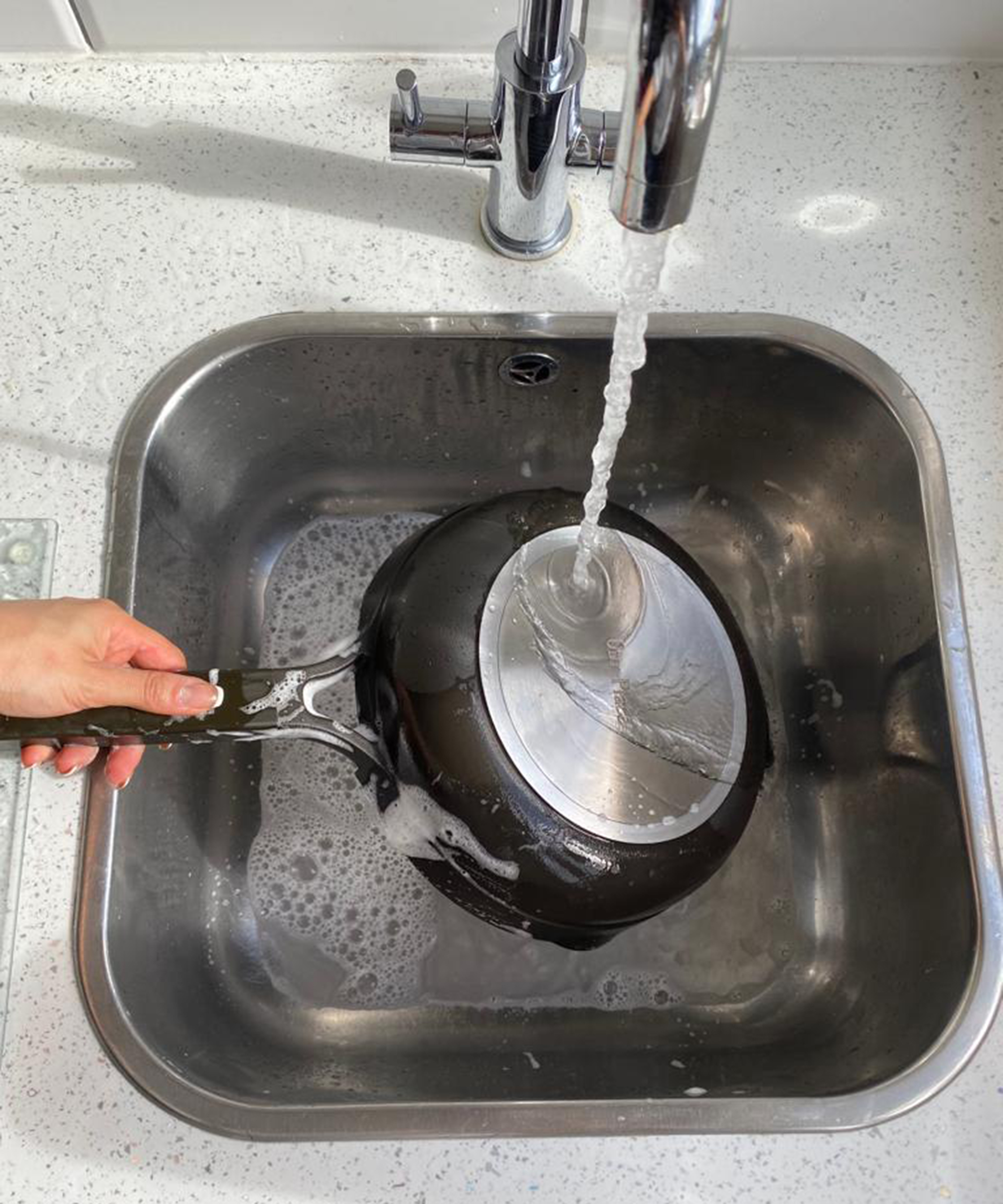
Rinsing base of Our Place Always Pan in kitchen sink
In a minute or so, your non-stick frying pan will be free from debris.
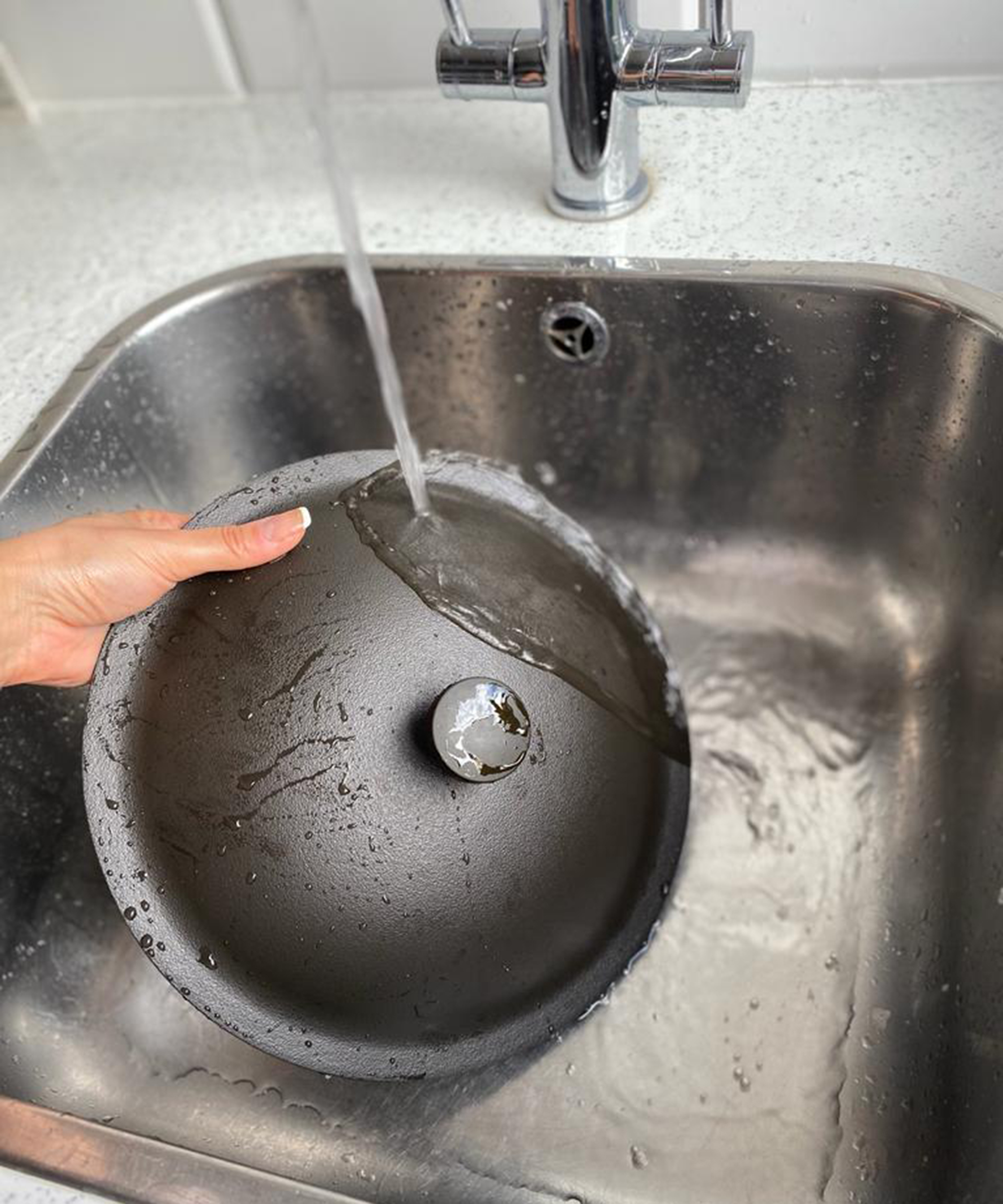
Christina Chrysostomou rinsing the Our Place Always pan lid in kitchen sink
Don't forget your lid!
Step 6: Wipe down your pan and the lid
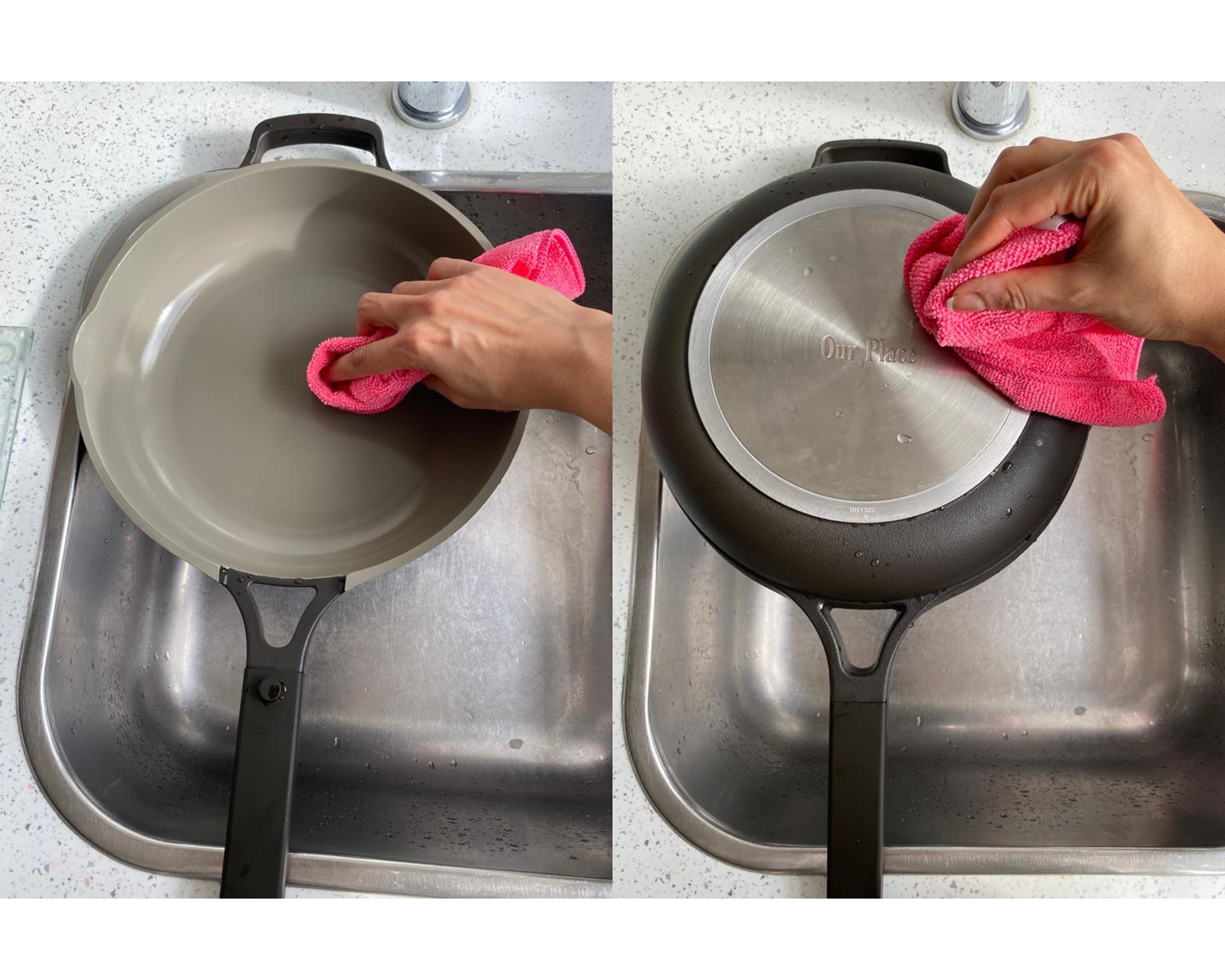
Christina Chrysostomou demonstrating how to dry a non-stick pan with a pink Marigold microfiber cleaning cloth
You can pop your pan and lid on a drying rack, or if you want to put it away immediately, use a dishcloth to speed up the process to get rid of any excess water.
FAQs
How do you know if non stick coating is ruined?
There are various tell-tell signs that indicate that the non-stick coating is damaged on your pan. The most obvious sign is when food starts sticking to the base of the pan. If you spot rust on your pan, this is a clear indication that you've scratched or worn the protective layer that prevents food from adhering to the surface.
How do you get brown stains out of non-stick pans?
An easy and eco-friendly way to get rid of discoloration is by using baking soda and vinegar to lift burnt-off stains. Once your pan is cooled, pour in a generous glug of white vinegar with warm water and stir in a couple of tablespoons of baking soda. Boil this vinegar-baking soda solution for a few minutes and use a wooden spoon or silicone spatula to remove as much of the acrid substance as possible. Leave the pan to cool, then pour away the dirty mixture down the sink, handwashing as normal after. Repeat if necessary.
Meet our experts

Melissa Metrano is an author, digital entrepreneur, and lifestyle content creator. Best known for her home, family, and wellness videos on YouTube and TikTok, Melissa shares updated content daily across her social media channels which reaches over 10 million people. Melissa is passionate about connecting with her community and sharing her journey in hopes to inspire others.

Hi, I'm the former acting head ecommerce editor at Real Homes. Prior to working for the Future plc family, I've worked on a number of consumer events including the Ideal Home Show, Grand Designs Live, and Good Homes Magazine. With a first class degree from Keele University, and a plethora of experience in digital marketing, editorial, and social media, I have an eye for what should be in your shopping basket and have gone through the internal customer advisor accreditation process.